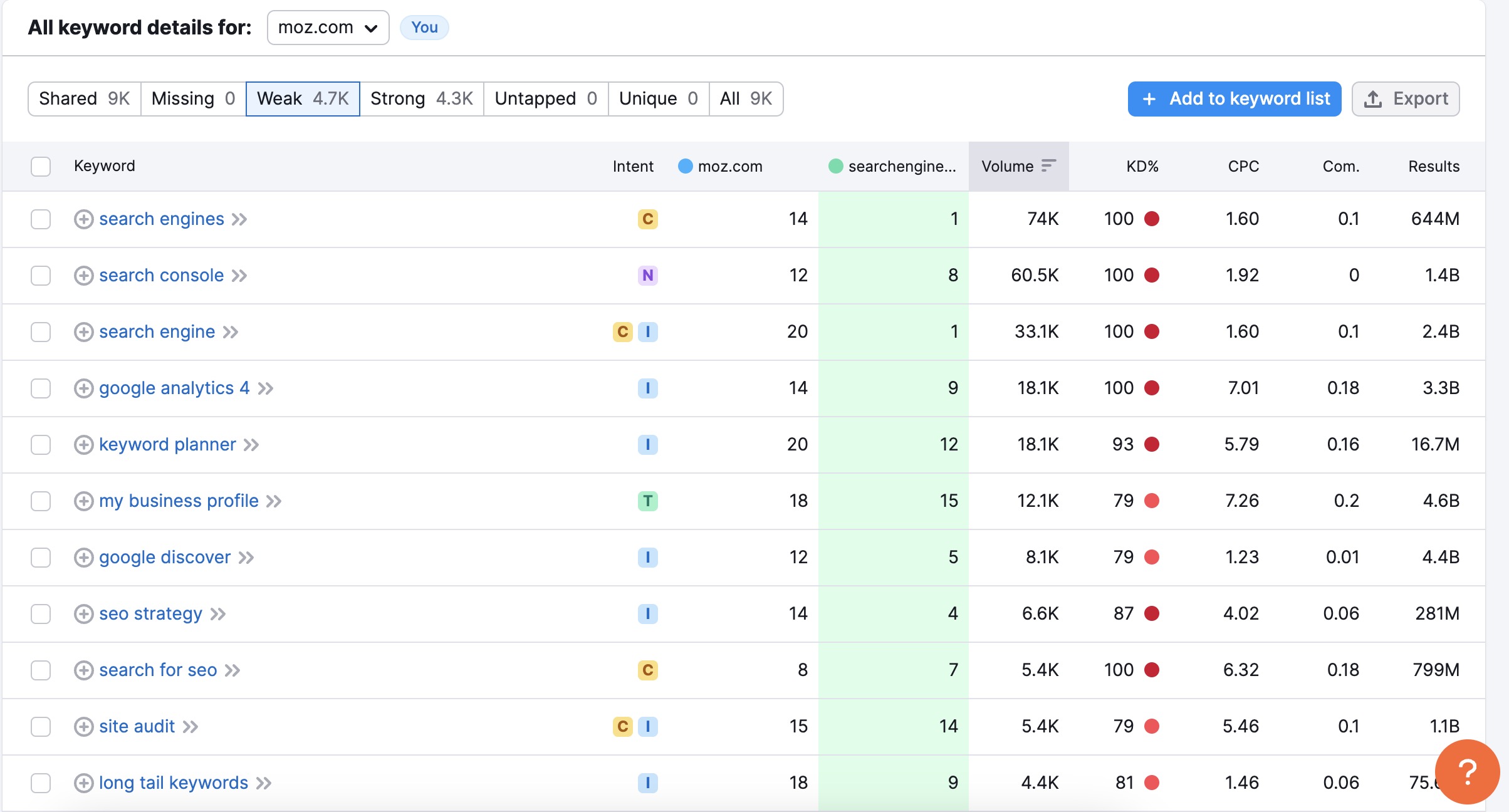In the ever-evolving digital marketing landscape, understanding and leveraging content gaps has become crucial for businesses aiming to enhance their online presence.
A content gap is essentially an unmet need or opportunity in your content strategy, where your audience seeks information that you haven't yet provided. Identifying and filling these gaps can significantly boost your SEO efforts and set you apart from your competitors.
In this comprehensive guide, we will delve into the world of content gap analysis, exploring its benefits, tools, and practical steps to implement it effectively in your SEO strategy.
Understanding content gaps

A content gap exists when there is a disconnect between what your audience is searching for and what your website currently offers.
This gap can be in the form of missing topics, insufficient depth in existing content, or a lack of specific content types like videos or infographics.
Recognizing these gaps is vital for enhancing user engagement, improving search engine rankings, and ultimately driving more traffic to your site.
Why is content gap analysis important?
Identifying content gaps is not just about filling missing pieces; it's about strategically enhancing your content to meet your audience's needs and surpass your competitors. This practice can lead to several benefits:
- Improved SEO: By covering more relevant topics, you can rank for additional keywords.
- Enhanced User Engagement: Providing comprehensive and relevant content keeps visitors on your site longer.
- Increased Relevance and Authority: By thoroughly covering topics, your site becomes a go-to resource, establishing credibility in your field.
Tools for content gap analysis
To effectively identify and address content gaps, several tools are at your disposal, each offering unique insights and capabilities.
- Google Analytics: This tool is essential for understanding your current content's performance. By analyzing metrics like page views, bounce rate, and average time on page, you can identify content that may not be fully meeting your audience's needs.
- SEMrush: A comprehensive SEO tool that offers features like the ‘Keyword Gap' tool. This allows you to compare your content with your competitors and see what keywords they are ranking for that you are not. This can guide you in creating content that fills these gaps.
- Ahrefs: Similar to SEMrush, Ahrefs provides a feature for conducting a competitive content gap analysis. Their 'Content Gap' feature at the site level allows you to enter several competitors and see what keywords they rank for in common that your site does not.
- BuzzSumo: This tool helps you understand what content is popular and trending within your industry. By identifying the most shared content on social media and the web, you can discover topics that resonate with your audience but are missing from your site.
- AnswerThePublic: This tool provides insights into the questions and queries people are searching for around your topic. By understanding these questions, you can identify content gaps in the form of unanswered queries or insufficiently addressed topics.
- Surfer SEO: Ideal for content optimization, Surfer SEO can help identify gaps in your content's quality and depth. By comparing your content with top-ranking pages, you can find opportunities to enhance your content to compete more effectively.
Conducting a content gap analysis for SEO
Conducting a content gap analysis involves several steps, each critical for uncovering opportunities to improve your content and SEO strategy.
1. Analyze your current content
Once you have identified what your audience wants, the next step would be to start analyzing your current content and see where the gaps are. During this step, you can also see how your current content is performing.
Start by auditing your existing content to assess its current performance. Look at metrics like traffic, engagement, and conversion rates.
Determine which pieces are not meeting performance expectations and may require updates or enhancements.
2. Understand your audience
The first step to conducting a content gap analysis is understanding your audience. With a little bit of research, you can learn more about your audience, who they are, what their pain points are, and what they are looking for.
Start by gathering audience insights. Use tools like Google Analytics, Google Trends, social media listening tools, and customer feedback to understand your audience's interests and needs.
Tag content pieces from our previous audit that you think are not serving your audience well.
In addition, identify new topics or questions that are gaining popularity but are not yet widely covered in your content.
3. Competitor analysis
You can also learn a lot with a competitor analysis.
While you may not be serving your audience well with your content, your competitors might be doing a great job.
It’s time to see what you’re up against.
This little exercise can also quickly tell you the topics you need to cover if you want to stay relevant and competitive in your industry.
Start by listing out your direct and indirect competitors who are ranking well in your industry.
Then use tools like SEMrush or Ahrefs to understand the keywords and topics your competitors are targeting and ranking for.
4. Keyword research
After a competitor analysis, it is time to dive into in-depth keyword research and shortlist the exact keywords you need to target.
Use SEO tools to identify high-potential keywords that you haven’t targeted yet, but your competitors have.
Tools like SEMRush or Ahrefs can make this job significantly easier with their Keyword Gap analysis tools that look like this:

Focus on keywords with high search volume and low competition, which represent the best opportunities for growth. However, these metrics are not the only things you will be looking for. Before finalizing keywords, make sure that they align with your earlier audience and content gap analysis.
5. Plan your content
Once you have a list of content topics and keywords, it is time to start planning your content calendar.
Based on your findings, create a content plan that addresses the identified gaps. This could include new topics, updates to existing content, or different content formats.
Ensure that your content is not just filling gaps but is also optimized for search engines, including proper keyword usage, meta descriptions, and user-friendly formatting.
6. Implement and monitor
Congratulations on updating old and publishing new content. But your job doesn’t end here, though.
Regularly check the performance of your new content. Adjust your strategy based on what resonates with your audience and what improves your SEO rankings.
Tools like SEMrush, Ahrefs, Google Analytics, and Google Search Console can be used to measure and monitor the various aspects of content performance.
Conclusion
Content gap analysis is an integral part of a successful SEO strategy. It helps you stay ahead of the curve, meet your audience's needs, and establish your site as a leader in your niche.
By regularly conducting content gap analyses, you can ensure that your content strategy evolves with your audience and the ever-changing digital landscape.
If you have questions, let us know.
